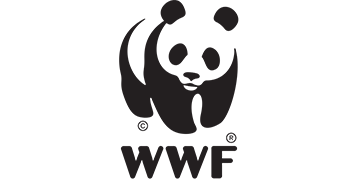
WWF Netherlands
Executive Summary
The World Wildlife Fund (WWF)’s mission is to see man and nature in harmony — to protect the planet’s wealth of animal and plant species. To achieve this mission, the world needs change and needs it fast.
The natural world shows us in so many ways a simple truth – there is strength in numbers and so all humans working together can achieve this harmony.
From cleaning up oceans and protecting endangered species, to expanding nature reserves and tackling climate change, the WWF is committed to some of the biggest issues facing the planet today.
And when it comes to achieving its goals, technology is going to play a major role. “Tech is the core driver to give this world a future,” says Paul Zevenboom, Head of Digital, eCommerce and Consumer Data at WWF Netherlands. “I really believe in technology — as long as we’re using it in the right way.”
Since WWF was founded 60 years ago, changes in technology have altered not only the organisation’s strategy and how they operate, but also how environmentalism is tackled.
-
$2 millionin donations collected from their target audiences
Adapting to An Ever-Changing Environment
In the not-so-distant past, WWF’s approach to achieving its goals would have focused primarily on traditional fundraising methods. But today, there is added complexity in engaging with audiences, from the sheer number of people to digital advancements.
The organisation recognised the need to:
- Adapt their engagement strategies for fast connections to new audiences AND
transition to a data-driven organisation that converts those connections to lifelong supporters and advocates for the planet. ]
“Everyone should be able to participate in the achievement of this mission, in their own way and time,” Zevenboom says. “We as WWF-NL must facilitate options that allow people to contribute in a personal manner. This is essential in our new strategy.”
“The biggest thing we’ve done since WWF started all those decades ago,” says Zevenboom, “is move from a campaign-driven organisation to a data-driven one.”
That’s where Salesforce comes in.
“The biggest thing we’ve done since WWF started all those decades ago, is move from a campaign-driven organisation to a data-driven one.” Paul Zevenboom, Head of Digital, eCommerce and Consumer DataWWF Netherlands
Getting the Most Out of Data
WWF Netherlands’ long-term goal is to target the entire Dutch population and create a powerful movement united behind man and nature living in harmony. Building this movement starts with building relationships that are personal and relevant to each and every supporter — which is no mean feat without a digital approach.
WWF needed the right solution to match their ambitions. “Right now, we have 1.1 million people in our Salesforce CRM,” says Zevenboom. “Different mindsets, different interests, different stages of their relationship with us. And Holland has a population of more than 17 million people, so we need many different kinds of approaches to tell our story to different audiences — to connect with them.”
With target groups ranging from corporations, volunteers and children right through to foundations, Zevenboom and his team needed a flexible and intelligent platform solution. So they turned to Salesforce and its Marketing Cloud platform to help them make the most of every interaction with personalised, cross-channel customer journeys using email, mobile, social, web, and more.
“One great example is that Salesforce helps relationship managers to see their challenges, potential, and value of the relationships” says Zevenboom, “They have all this real-time data and use it to assess the value of each connection, resulting in a focus on our most engaged supporters. They can connect with people by leveraging an outreach strategy that meets people where they are. And this is huge, as it allows us to give movement members the experience they expect from WWF.”
The Importance of Partnerships
WWF needed a more agile way of operating, not only to reach people but also so they could respond in real time to events happening around the world. To date, they have helped protect 60 million hectares of the Amazon forest, reduce Hong Kong shark-fin imports by 50%, and so much more. With such major and varied goals, they knew they needed products that can scale to meet various organisational requirements, but still integrate into one solution.
“With Salesforce’s modular structure,” says Zevenboom, “moving to a data-driven organisation, you have one single landscape view in one platform. This allows all departments to function as agile teams.” And that means WWF can be better at targeting and responding faster to the outside world. It’s a win-win, both from an organisational and a technical point of view.
“You need a good partner to help you, because all the products are there, but how you’re going to use them is very important,” says Zevenboom. “So, not only did we use Salesforce Marketing Cloud, we also use Sales Cloud and Service Cloud. You can implement Salesforce in different kinds of ways. You can start with the client service part, you can start with the marketing part, you can start with the relationship management part — we did everything in one big implementation exercise.”
The Power of Responsiveness
By moving from old-style fundraising campaigns to a more data-driven strategy, WWF was able to be more responsive. During the terrible 2020 Australian bushfire season, the need for rapid action was tested.
As the bushfires blazed, the following question popped up on social media in the Netherlands: what is WWF doing about this? The team jumped into action, with the knowledge that they needed funds to run a programme of preventing fires and saving trapped animals.
“Around twelve o’clock on a Sunday, we said we’re going to do this — reach people to help us bring money to WWF Australia,” says Zeveboom, “The following Monday, we set up many ways that people could help: a QR code that donors could scan, a donation form on a website, a big SMS campaign; we had four or five money-related options.”
Within a couple of days, WWF had raised more than $2 million, collected from their target audiences. Marketing and messaging approaches used were varied to suit supporters engaging across a host of channels including email, SMS, and media.
“Before we had our Salesforce solution in place, the same effort would have taken weeks and maybe months, and what would be the cost to the environment and outback animals with such a lead time?”
Explore the Solutions:
A Brighter Future
Since WWF was founded, the organisation has played a central role in building bridges with people and organisations in different ways. Whether it’s through conversations with governments and private businesses, or reaching out to people at the local level, the goals have always been the same: to spread the word about their mission as an organisation, to start conversations, and to change behaviours that can lead to a better future.
Armed with the right technology, WWF is reaching more people, affecting real change on the individual and collective level, and making good on their promise to build a brighter future for all. The emergency is here, the time to act is now. “From small steps to major leaps, the future is a choice,” says Zevenboom, “and it will be decided by every one of us with the actions we choose to take, starting today.”
